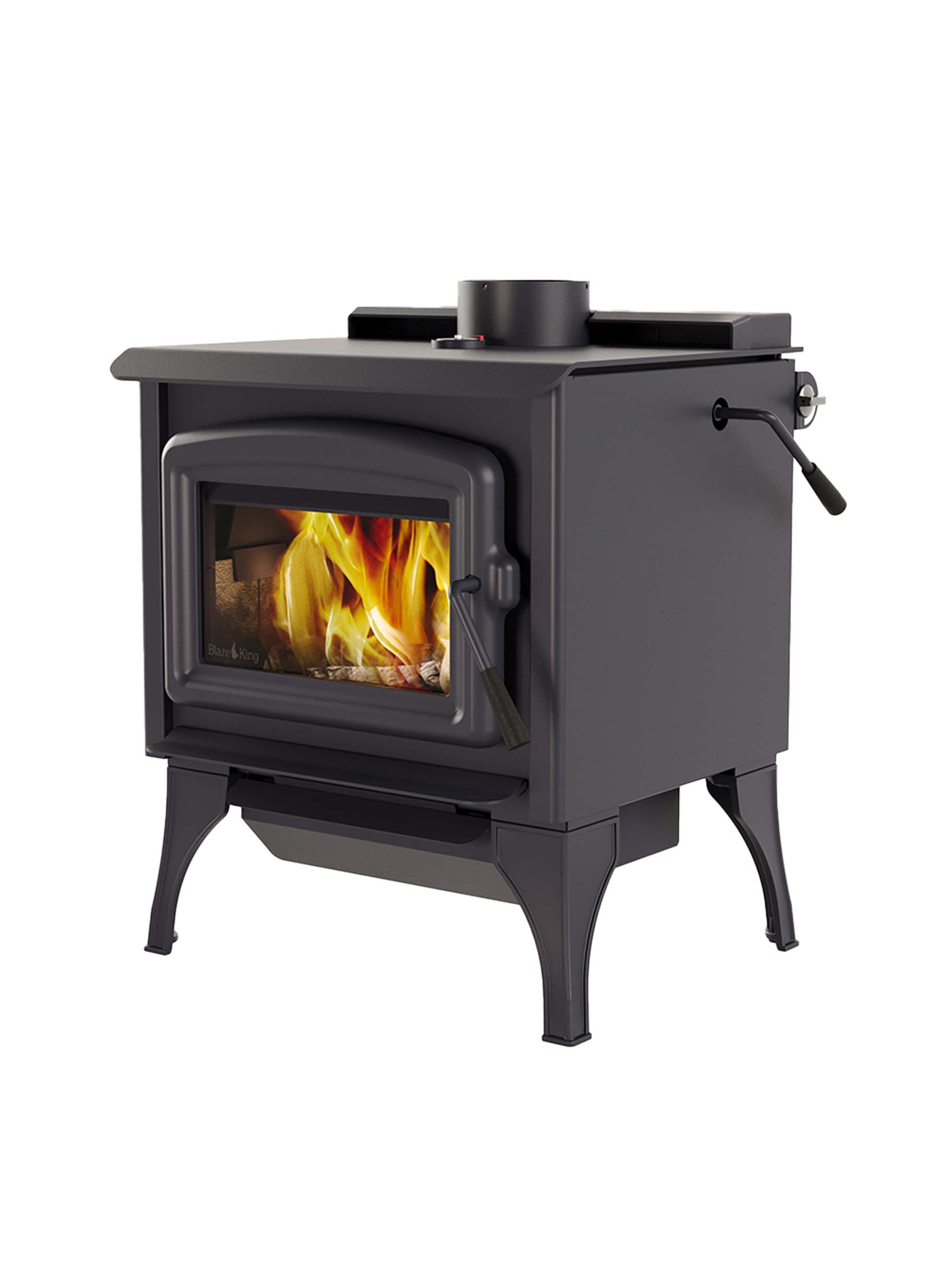The lowest burn on my Ashford 30.1 is a 200F F flue stack. Below that, the stack gasses will start condensing water out and creosote-up the pipe, the cat being just in the active zone all the while. I honestly don't think any secondary air burner can do that and still burn cleanly. This extreme low burn is after a load char of 20 minutes or so and an hour of medium burn. No stove can go from cold iron to low burn but it takes an hour or more to get the stove real hot. Load timing, when you load, can even out heating a lot.
Single walled pipe might increase the minimum low fire as flue draft will be reduced due to excessive flue gas cooling. I believe this is why double walled pipe is specified, at least on my stove.
I heat 950 sq. ft.
A good cat is necessary for a real low burn. Also the bypass damper must not leak and the overall flue height must be able to support a very low burn. It must be insulated the whole way up or a very low burn will not be possible with any stove. Don't be afraid to crack a window. I believe the BK stoves have the lowest turn-down ratio of most all stoves. I see by the picture your stove is rather old. BK stoves have improved over the years.
Informative post!
I am pleasantly surprised you are heating 950sqft with an Ashford 30.1. That is impressive. That is a big stove...just looked at one today...it was a 30.2 though. Virtually the same stove
If I may ask you:
1. How well insulated is your home?
2. What are outside air temps currently?
3. What are inside air temps currently?
4. What are your stove top temps?
5. At what distance on your stove pipe did you take the stack temperature?
6. Was that a surface temperature taken by a IR gun, magnet thermometer, or a probe thermometer.
Pretty impressive turn down for that stove and home size. I ask you these questions because stove size and stove top (or side) temperature readings can give me an indication as to how your stove would compare in my own home when compared to my own current stove.
In comparison (not apples to apples) my coal stove (roughly same size as Ashford 30) performs now for 1350 sq. ft. :
OAT 35F
IAT 72F
My true stove temp is 250F, but my stove top is convective at 150ish*F
My stove pipe 12” up off stove is 125F and stove pipe temperature going into the thimble is 89F-99F depending how chimney is drafting usually .01-.02 .
The chimney is 8”x8” clay lined masonry just a few inches shy of 15ft from firebox floor to the top of the chimney, and only 10ft of actual chimney from top of thimble to the top of chimney.
Just today I went and bought two sections (4ft) of clay liner to add to it temporarily for testing purposes.
The reason I asked you these questions is because our stoves are very close in physical size and weight.
Many wood stove manufacturers have begun including approximate home heating size in square feet and while that is a good start in choosing a stove it only takes you so far and gives a new stove owner no idea of turn down on a stove. A large stove at 400F gives off much more heat than the same smaller stove at the same temperature.
However, for folks that have had experience with stoves and currently have a stove in their home it then becomes much easier to further dial in a stove choice than by simply glancing at the square feet listing in a brochure.
You can tell if a stove will be too big or too small, or if it will meet your needs by making a couple key comparisons. You can compare a new stove to your current stove at home by using three things. This can be done by comparing approximate physical size, approximate physical weight, and by determining how hot the stove top is at a low burn and the high burn rate. The most important of the two being the low burn. Of course, this only works if you have a current stove and know your current low burn temps when burning in mild weather.
In my opinion, in addition to square feet ratings, manufacturers could further assist current stove owners looking to purchase a new stove if they would include the stoves average (just get close) low burn temperature/rate. Most folks know how they run their stoves. Combine this information with approximate physical size and weight and this can let you know whether you need the same size stove or bigger or smaller.
Providing this low burn temperature with square feet ratings gives new prospective owners a better idea of turn down rate of the new stove.
Manufacturers, if you called them, may already be able to provide you with this information.
Using these comparisons with 3 stoves that I have and knowing how each burns has kept me from purchasing 3 stoves that were much too big for my home.
While looking at the Blaze King Ashford 30.2 today I used two of these comparisons to determine the stove is much too big for my home. The missing piece of information was your detailed post giving examples of your stack temp and your homes square feet, the latter being the key indicator to your stoves turn down rate which has lead me to ask you the above questions which I am sure will further help me pin point just how low this stove will burn. The way it sounds, it might be an option yet...even though it is big physically. At least I would have plenty of stove left during the coldest periods and rarely have to fire the stove hard.




